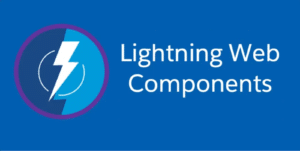Salesforce is undoubtedly a large CRM platform with millions of satisfied clients and businesses. There are a large number of features that keep it going with the latest trends of the market. Salesforce Lightning Web Components are a major part of the ecosystem that has seen a lot of growth in the past years. These are quite advanced and a part of the prominently used applications. This is the reason that most of the users are willing to get a stronghold of them. Today, we will be discussing some of the important aspects of the same for your better understanding. Therefore, you can always have a proper outlook and utilize them accordingly.
Table of Contents
ToggleWhat is Salesforce Lightning Web Component?
Before starting our journey, you should learn about the beginning of the Salesforce Lightning Web Components. Earlier, the concept of Lighting Components was introduced for the people related to Salesforce. It was like a user interface framework that helped in developing mobile and PC applications. Basically, the idea was to reduce the overall navigation time for both the developers and users. However, it lacked some crucial features like it was heavily dependent on the Aura framework. Also, you can’t solve complex problems or require a lot of resources for a simple job. Hence, developers seem to bring a better version of it that led to the birth of Salesforce Lightning Web Components. These are quite promising and tend to deliver impressive results than the predecessors.
The framework is based on the web standards that develops Lighting Components on the platform. The user only requires information on HTML, CSS, and Java to run the entire application. Moreover, it reduces the manual effort for creating them due to the fact they are aligned with the latest web technologies. Also, a new user can easily deploy the system without having knowledge of Salesforce. The flexible nature allows the interference of creativity which is the need of the modern generation. Eventually, more users can develop Lightning Components with proper assistance from the new technology.
Also Read: Tools for Building Lightning Components in Salesforce
Benefits of Salesforce Lightning Web Components
There is no doubt in the fact that Salesforce Lightning Web Components are in high demand within the clients. If anyone is wondering about their credibility, here are some major benefits of them in the industry,
- Easy Implementation– Unlike the Lightning Components, the advanced Salesforce Lightning Web Components avoid pre-requisite knowledge. The developers can simply move further with JavaScript rather than developing the old Aura Framework.
- Better Performance– the main motive of Salesforce is to provide the best results and workflow to the clients. Salesforce Lightning Web Components will build a faster network that will eventually deliver quick results.
- Compatibility– As mentioned earlier, users can implement CSS (Cascading Style Sheets) and other features in the project. Hence, you will experience a better deliverability rate. Also, the application supports two-way data loading that makes it easy to communicate between two different components.
- Latest Web Standards– Salesforce Lightning Web Components are the new generation tools with advanced features such as browser security. The clients can easily manipulate them to bring out the best results. Also, the skills acquired during this will get you going in other technologies as well.
Final Verdict
In the end, it is safe to state that Salesforce Lightning Web Components are a combination of HTML, CSS, JavaScript, and Configuration. The developers will get a huge advantage in every field, especially while working with new coding standards. The businesses have seen a huge growth in their UI rate after implementing the new Lightning Web Components. More information on the same can be found in the Trailhead Community and Salesforce consulting services. You can also refer to our special course on Lightning Web Component Development.





